
Variety
Many different systems of Eskrima exist and can trace their origins to a single tribe or region. Some of the most famous systems from and in the Philippines are Lightning Scientific Arnis International/Lema Scientific Kali-Arnis System (LSAI/LESKAS), Pekiti Tirsia Kali, San Miguel Eskrima, Doce Pares, Balintawak, Modern Arnis, Kalis Illustrisimo/Bakbakan, while in the United States the Inayan System of Eskrima, Sayoc Kali, Cabales Serrada Eskrima, Lameco Eskrima and Dog Brothers Martial Art are popular.
Practitioners of these arts are noted for their ability to fight with weapons or empty hands interchangeably. Most Eskrima systems include fighting with a variety of weapons, striking with hands and feet (suntukan, sikaran, tadyakan/tadiyakan), grappling and throwing (dumog), biting and whatever skills needed to complete a warrior's training in the old days of tribal warfare. Perhaps the only major fields that have not been given as much emphasis as in the past in modern eskrima training today are skills needed for fighting effectively in groups and hilot - a Filipino system of first aid, healing, massage, and herbal medicine traditionally taught alongside eskrima but that has now virtually disappeared.
In most systems, skills with weapons and with empty hands (unarmed) are developed concurrently using training methods designed to emphasize their common elements. The most common variations used are single stick (solo baston), double stick (double baston) and sword/stick and dagger (espada y daga). Some systems are known to specialise in other weapons such as the whip and staff.
An eskrimador, kalista or mangangali (as some modern practitioners called themselves) is a practitioner of Eskrima, while Arnisador is also used for the variant name Arnis.
Nomenclature
The term Eskrima is the Filipino spelling which comes from the Spanish word esgrima, "fencing". Arnis is thought to derive from the phrase arnés de mano, Spanish for "harness of the hand". The origin of the name Kali is not certain, although some suggest it is related to the traditional weapon called a kris, keris, or kalis. Another explanation is that the word is a portmanteau of the Filipino words kamot, or kamay meaning hand or body, and lihok, meaning motion. This explanation may be a more recent innovation, retroactively fitting an acronym to the existing name. However, historically there was never a mother or parent art form known as Kali in the Philippines, including the Muslim populated Southern Mindanao. In fact, the term Kali did not exist until the 1960s when two well known eskrimadors in the United States popularized the word to distinguish what they taught from the teachings of other eskrimadors. [citation needed] Unfortunately, many came to believe that Kali represented a parent art form of escrima and arnis, and eventually the name, Kali, took on a life of its own. Today, the term Kali, although seldom used and mostly in few areas in the Southern Philippines, is gaining more acceptance and popularity throughout the country thanks in due part to the influence of visiting foreigners who more commonly use this term to describe the art. Several theories claim that the difference in the name either implied the region from which the art originated, the time period when the art was developed or the primary weapon of training, although in reality these claims are groundless. One will find the terms Eskrima and Arnis used interchangeably in the Philippines regardless of region, time period or weapon emphasis.
Filipino Martial Arts have seen an increase in prominence due to several Hollywood movies and the teachings of modern masters such as Dan Inosanto, Cacoy Canete, Elmer Ybanez, Tony Diego, Teofilo Velez, Richard Bustillo, Ryan Gialogo, Edgar Sulite, Leo Gaje, Armando P. Angeles, Leo Giron, Mike Inay, Ernesto Presas, Remy Presas, and Angel Cabales.
Eskrima Sticks

A pair of rattan sticks used in Eskrima
Rattan, a cheap wood from a type of vine in the Philippines, is the most common material for sticks and staves. Hard and durable, yet light weight, it can be fire hardened. It shreds under only the worst abuse and will not splinter like other woods do - thus making it a safe training tool. This aspect also makes it useful in defending against blades. Kamagong (Ironwood) is also sometimes used, but generally not for sparring, as it is dense enough to cause serious injury, although traditionally sparring does not include weapon to body contact; The participants are skilled enough to parry/counterstrike, showing respect in not intentionally hitting the training partner. Eskrima sticks are made in many sizes depending on the system and the respective ranges being trained. Common lengths range from 6" to 96", with the most common ranging from 24" to 36". Eskrima sticks are a reflection of the artist, their system and methodology.
History
As with most martial arts, the history of Eskrima is surrounded by legends, making it difficult to pin down facts. This is especially true for Eskrima since a significant amount of its history is anecdotal and oral. Being a martial art for the common folk, some of its practitioners lacked the scholarly education to create a written history. This confusion is further complicated by the fact that there are actually many different fighting systems with different histories that are called Eskrima (or Arnis de Mano). One explanation for the origin of Eskrima systems is that they were originally the fighting systems possessed by every tribe in the Philippines and used by them to fight and defend against each other. Another explanation is that it evolved from Indian martial arts, as well as other Malay martial arts such as Tjakalele and Silat, brought to the Philippines by people who travelled through the Malay archipelago.[1]
It is historically recorded, though, that when the Spanish conquistadors arrived, some tribes fought them, using native weapons and techniques. Magellan, portuguese, was killed in the battle of Mactan in 1521 by forces of the Mactan tribal chief Lapu-Lapu when Magellan landed in Cebu - albeit by an arrow, not a sword or stick as many eskrimadors promote, yet this information is still unknown as many Spaniards and Portuguese exaggerated their stories to impress their King. From this point sources differ on the history of Eskrima. Certainly by the time the Spanish reached the Philippines, they were extremely challenged by how the natives had fought, when the natives of the Philippines only had simple weapons such as swords, spears and bow and arrows plus a shield to protect themselves. The experienced conquistadors were able to invade Maharlika (now Philippines). The degree to which this affected the practice of the native fighting arts is a matter of debate, but it seems likely that the Filipinos kept what worked and discarded what didn't. Eskrima had to be hidden from the Spaniards -- they practiced it in their dancing, and pretended they were practicing the Spanish style of fencing to avoid being caught. For this reason, Eskrima has some strong Spanish influences.
Many believe these Philippine fighting systems have strong historical roots from Indonesian martial arts that are Chinese influenced like Kun Tao. Kun Tao (literally the way of the fist) of course finds its roots from Ch'uan Fa (which is a generic word for what westerners would call kung fu, it also literally means way of the fist). Other systems that have similar movements to many Filipino systems also find their roots from Ch'uan Fa. There are even counts of lost Ch'uan and Tai Chi double stick forms that many of the fleeing renegade monks would have trained for in that period. These Chinese-based influences to the martial arts are not as powerful as the direct links to the cultural and political ties found in the Philippines even today. Many even believe the systems are totally intact in the way profound Chinese arts once were before events like the Cultural Revolution.
Others believe that since FMA is weapons-based, this suggests its roots and development are independent and autonomous of most foreign "fist" systems. In fact, it can be said that the inevitable similarities are due to the weaponry components of both Filipino, Indonesian and Chinese martial arts. Any exercises or similar hand movements to that of the Indonesian and Chinese arts were introduced only in recent years to augment the newer Eskrima groups - something which is less apparent in the more traditional and established authentic systems. Filipinos had their own empty hand systems, such as: sikaran (kicking art), Dumog (submission), and all the fist strikes come from weapon fighting techniques, because the Guru's (instructors) believe the hand can strike the same manner with or without a weapon.
Although the turbulent and conflict-wrought history and environment of the Philippines enabled the FMA to develop into an efficient, albeit violent art, this changed recently in the sense that some systematization allowed easier and quicker teaching of the basics. Except for a few older and established systems, before this change it was more common to pass the art from generation to generation in an informal approach. Regardless of teaching methodology, these arts are considered so effective and easy to learn with sufficient practice that the U.S. military teaches it to some varying degree in all of its branches, particularly U.S. groups like the Navy SEALs, Army Special Forces and Delta Force. Many special operations groups were stationed in the Philippines for some period of time during WWII - the period when these arts first became apparent to the America mainstream.
For the last century, the most important practice of Eskrima has been in dueling without any form of protection, which was common in the Philippines and among Filipinos elsewhere (Hawaii pre-annexation). The founders of most of the currently popular Eskrima systems were famous duelists; legends circulate about how many people so-and-so has killed. Certainly duels did happen and deaths did result. However, to reduce legal problems that arose from injury or death, most duels would later often be fought with hardwood sticks instead of blades. Public dueling has been all but eliminated from the Filipino society and is even deemed illegal in the Philippines today. However, one can still find regular gathering of masters in major parks in the Philippines where at a drop of a hat one will not hesitate to prove his point through an unprotected "friendly match". Local folk in the Philippines are much more likely to carry knives than guns, and much more likely to use them when tempers rise, than people in North America or Europe. As a result, knife-fighting (and to a lesser extent, fighting with machetes) is still very much a living skill in the Philippines, particularly in rural areas and especially in areas where insurgents are based.
For a more precise history, one must distinguish between the different systems of Eskrima (see below).
Attempts to trace the lineage of a practitioner is often difficult. For example, Antonio Illustrisimo (duelist and grandmaster) seemed to have learned to fight while traveling around the Philippines (and the rest of the Pacific) as a sailor, while his nephew and student Floro Villabrille claimed to have been taught by a blind princess in the mountains - a claim later refuted by the older Illustrisimo. Both have since died.
Secrecy was also a large part of this art and teaching it outside of the Filipino community was considered taboo until the 1960s when Eskrima was first brought over to the U.S. by Grandmaster Angel Cabales. Still instructors of stick fighting classes in the 1960s and 1970s were reprimanded by Filipino elders for publicly teaching what had been traditionally kept secret, a practice which preserved a language and a culture, preventing watering down of the art.
Eskrima today
In recent years, there has been an increased interest in martial arts from cultures all over the world, including Eskrima, Capoeira, Savate, Muay Thai and others. Arguably one of the best arts for learning to use or defend against knives, Eskrima has appealed to people not necessarily interested in its cultural aspects. As a consequence, most Eskrima systems have been modified (in varying degrees) to make them more marketable to a worldwide audience. Usually this involves increased emphasis on locking, controls and disarms, as well as focusing on its "self-defense" aspects, along with some influence from Asian martial arts (sometimes in name only). The art of eskrima is actually a defense through offense-based art (the best defense is a good offense) rather than just a defense-based art, as it is often depicted. Modern training methods tend to de-emphasize careful footwork and low stances, with more emphasis on learning techniques as opposed to more direct and effective tactics designed to instantly end an encounter (which is generally believed to have lethal results and are, therefore, discouraged).
Eskrima has also begun to be practiced as a sport, although there is as yet little standardization or uniformity. The rules, with their corresponding effect on technique, have yet to be decided upon, although several tournaments have been held with various sets of rules. The oldest and most common set is the WEKAF (World Eskrima Kali Arnis Federation) rules that work on a 10 point must system where participants spar with a body protector and helmet. This format has sometimes been criticized because it emphasizes training in offensive techniques at the expense of defensive "preserving" techniques, giving rise to the impression that combatants are merely bashing at each other in a disorganized way, trying to get in more hits than one's opponent. This is, to some, an anti-thesis to traditional training methods, where training in footwork and arm/weapon movements are intricate and precise as to become like dance (one popular tradition is that eskrima survived during the centuries of Spanish colonial rule because techniques were learned in secret as dance steps). As a consequence, WEKAF tournaments may be seen as not promoting the original art.
There are efforts amongst the Eskrima society to cross train in other tournament competitions where there is noted differences of the rules applied to the contest. For example there are competitions using padded sticks and no body armor. Judges are required to confirm a legitimate target has been struck. The bladed concept using the padded stick and consideration by the judges to the effectiveness of the attack and or defense is often visually seen by the spectator. This is a stop and go point system style.
One other variation of tournament combat is seen with again padded sticks and minimal body armor protection but the competition is continuous similar to the WEKAF 10 point method. One major difference seen in this method is an awareness of the importance of defending oneself, even after scoring a point.
Cross-training
Since it is not uncommon to see Eskrima and Chinese martial arts like Kenpo or Wing Chun practiced together, there is sometimes confusion between styles, systems and lineage. Some people will cross-train and do not give proper credit to the founding fathers or principles of their arts. Eskrima and Wing Chun cross-training dates back to Bruce Lee and Dan Inosanto. Kenpo cross-training dates back to Hawaii's territorial/pre-statehood days, and is rooted in the cross-training between Chinese and Filipino immigrants settling there. The proponents of such training say the arts are very similar in many aspects and complement each other well. It has also become marketable and fashionable to offer eskrima classes (some FMA proponents say that some of these are "stripped down" versions of real training methods) in other traditional Asian martial arts studios in America. FMA practitioners (usually Filipino eskrimadors) point to an observed tendency of other arts to borrow techniques from eskrima and calling it their own as proof of eskrima's increasing popularity and demand as a practical, effective yet beautiful martial art.
Technical aspects
Weapons
The most obvious feature of an Eskrima class is that it is mostly weapon-based. The student is first taught to work with weapons and only advances to empty-hand techniques once the stick techniques have been learned. Most other well known martial arts start by developing empty hands proficiency, often for years, before being introduced to the weapons component. This feature of Eskrima is justified by the argument that most systems have unified their teaching so that the empty-hand techniques are learned through the same exercises as the weapon techniques, making muscle memory an important aspect of the teaching. Since you may not have a weapon available, or might lose a weapon, the body becomes the weapon. Because the weapon is seen as simply an extension of the body, the same angles and footwork are used either with or without a weapon. This allows weapons to be taught before empty-hand, and by many FMA schools it is referred to as the concept of motion grouping.
The most common weapon used in training is a rattan stick about the length of the practitioner's arm, although the length may vary from about 45cm to 70cm. Some schools prefer sticks of a particular length, while others expect students to learn which techniques are appropriate for a variety of lengths. Most North American and European schools use hand and head protection when sparring with rattan sticks.
Other sticks used for training and for some duels are made of hardwood, such as bahi (heart of the palm), molave or kamagong (ebony), that is burned and hardened. They can also be made out of aluminum or other metals, or modern high-impact plastics. The sticks can also be padded for training purposes, though this practice is usually only used in schools in North America or Europe.
Many systems in fact begin training with two weapons, either a pair of sticks or a stick and a wooden knife (called espada y daga, Spanish for "sword and dagger"). This is sometimes justified by pointing out that warriors would not have gone into battle with an empty hand; another common explanation is that having two weapons forces the practitioner to use both hands, which is valuable even when working with one weapon: the extra hand is used to control the opponent's weapon and to strike when the range is sufficiently close. (Such uses are banned in modern sport fencing, so sport fencers generally hold the unused hand away from danger.) Historically, people all over the world, including Filipino warriors and Renaissance fencers often trained with a long weapon in one hand and a short weapon in the other.
The stick techniques used in Eskrima fall into two categories: the stick techniques that are training for sword fighting, and the sword techniques that are training for stick fighting. As usual, most systems are designed so that the practitioner can adapt their training to either weapon. Other weapons traditionally included in Eskrima training include spears, shields, whips and nunchaku.
Ranges
Most systems recognize that the technical nature of combat changes drastically as the distance between opponents changes, and generally classify the ranges into at least three categories. Each range has its characteristic techniques and footwork. Of course, some systems place more emphasis on certain ranges than others, but almost all recognize that being able to work in and control any range is essential.
In order to control the range, and for numerous other purposes, good footwork is essential. Most Eskrima systems explain their footwork in terms of triangles: normally when moving in any direction two feet occupy two corners of the triangle and the step is to the third corner such that no leg crosses the other at any time. The shape and size of the triangle must of course be adapted to the particular situation. The style of footwork and the standing position vary greatly from school to school and from practitioner to practitioner. For a very traditional school, very conscious of battlefield necessities, stances will usually be very low, often with one knee on the ground, and footwork will be complex, involving many careful cross-steps to allow practitioners to cope with multiple opponents. The Villabrille and San Miguel systems are usually taught in this way. Systems that have been adapted to duels or sporting matches usually use simpler footwork, focusing on a single opponent. North American schools tend to use much more upright stances, as this is much easier for the legs. There are, of course, many exceptions.
Drills
Several classes of exercises, such as sumbrada, contrada, sinawali, hubud-lubud and sequidas initially presented to the public as a set of organized drills by the Inosanto system are expressly designed to allow partners to move quickly and experiment with variations while remaining safe. For example, in a sumbrada drill taken from the Villabrille system, one partner feeds an attack, which the other counters, flowing into a counterattack, which is then countered, flowing into a counterattack, and so on. The hubud-lubud (hubad-lubad is also accepted because, though hubad means naked in tagalog, it means the same as hubud and actually used more often in many Cebuano-derived dialects in the southern portion of the country) taken from the Doce Pares system is frequently used as a type of "generator" drill, where one is forced to act and think while fists are already flying. Initially, students learn a specific series of attacks, counters, and counterattacks. As they advance, they can add minor variations, change the footwork, or switch to completely different attacks; eventually the exercise becomes almost completely free-form. Disarms, take-downs, and other techniques usually break the flow of such a drill, but they are usually practiced beginning from such a sequence of movements in order to force the student to adapt to a variety of situations. A common practice is to begin a drill with each student armed with two weapons; once the drill is flowing, if a student sees an opportunity to disarm their opponent, they will, but the drill will continue until both students are empty-handed. Some drills for practicing disarms use only a single weapon per pair, and the partners take turns taking it from each other. Seguidas drills taken from San Miguel system, are sets of hitting and movement patterns usually involving stick and dagger.
Rhythm, while an essential part of Eskrima drills, is given more emphasis in the United States and Europe where a regular beat serves a guide for students to follow. To ensure the safety of the participants, most drills are done at a constant pace, which is of course increased as the students progress. The rhythm, together with the added effect of a southern Philippine Muslim attire of a vest and sashed pants, is commonly mistaken to be some sort of tradition when practicing eskrima in the Philippines - perhaps either incorrectly derived and linked to other traditional Filipino rhythm based dances or an attempt to gain some authenticity and ethnicity. Eskrima is usually practiced in the Philippines without a rhythm, off-beat or out of rhythm. Although the art existed long before the Spanish influence, the art is "tagged" with the Spanish name for Fencing (Eskrima). Typically, practitioners in the Philippines use their everyday clothes. The more affluent and modernized city practitioners and foreigners practice using their studio uniform, gi or 3/4 length pants, however there is no officially established standardized "uniform".
Strikes
Many Filipino systems focus on defending against and/or reacting to angles of attack rather than particular strikes. The theory behind this is that virtually all types of hand-to-hand attacks (barehanded or with a weapon) will hit or reach a combatant via these angles of attack and it is reasoned that it is more efficient to learn to defend against angles of attack rather than particular styles, particular techniques or particular weapons. For instance, the technique for defending against an attack angle that comes overhead from the right is very similar whether the attacker uses barefists, a knife, a sword or a spear.
Older Filipino systems gave each angle a name, but more recent systems tend to simply number them. Many systems have twelve standard angles, though some have as few as 5, and others as many as 72. Although the exact angles, the order in which they are numbered "Numerado" and the manner in which they're executed vary from system to system, most are based upon Filipino cosmology. These standard angles are used to describe exercises; to aid memorization, a standard series of strikes from these angles called an abecedario (Spanish for "alphabet") is often practiced.
Some angles of attack and some strikes have characteristic names.
- San Miguel is a forehand strike with the right hand, moving from the striker's right shoulder toward their left hip. It is named after Saint Michael or the Archangel Michael, who is often depicted holding a sword at this angle. This is the most natural strike for most untrained people. It is also referred to as a "#1," in 12 systems which employ 5, 12 or multiple angles.
- A redondo (Spanish for "round") is a strike that whips in a circle to return to its point of origin. Especially useful when using sticks (rather than swords), such a strike allows extremely fast strikes but needs constant practice.
- An abaniko (from the Spanish for "fan") is a strike executed by whipping the stick around the wrist in a fanning motion. Not very forceful and not well suited to swords, this strike can be very quick and arrive from an unexpected angle.
- Hakbang is a general term for footwork. For example, hakbang paiwas is pivoting footwork, while hakbang tatsulok is triangle stepping.
- Punyo is a strike delivered with the butt of the weapon, usually to a nerve point or other soft spot on the opponent, although not necessarily: in skilled hands, the punyo is often used to shatter bones.
Perhaps because of its recent history as an art of duelists, Eskrima techniques are generally based on the assumption that both the student and their opponent are very highly trained and well prepared. For this reason, Eskrima technique tends to favor extreme caution, always considering the possibility of a failed technique or an unexpected knife. On the other hand, the practitioner is assumed to be able to strike very precisely and quickly. The general principle is that an opponent's ability to attack should be destroyed (rather than trying to hurt them to convince them to stop). Thus many strikes are to the hands and arms, hoping to break the hand holding the weapon or cut the nerves or tendons controlling it. Strikes to the eyes and legs are also important.
Major systems of Eskrima (alphabetical order)
- Babao Arnis - babao arnis covers three systems babao arnis which is a system passed on to master narrie babao by his father. it also teaches dose paras escrima, and villibille/largosa kali. babaoarnis.com
- Bahad Zu'Bu Kali Ilustrisimo - Founded/Developed by Epifanio 'Yuli' Romo.
- Balintawak - Founded by Anciong Bacon after internal dispute amongst some of the original founders of the Doce Pares system.
- Battlefield Kali - Founded by Burton Richardson based on his experiences in full-contact stick fighting and training with various Escrima masters including Dan Inosanto.
- Cabales Serrada Eskrima - Founded by Angel Cabales.
- Davis/Cabales System of Serrada Eskrima - Founded by Anthony Davis - After training and collaborating with Angel Cabales.
- Dekiti Tirsia Siradas - Founded by Jerson Tortal Jr, son of Jerson "Nene" Tortal. This family art system of the Tortal clan emphasizes close quarter attacks and cuts.
- Doce Pares Escrima - Founded by the Cañete family, headed by GM Cacoy Cañete.
- Garimot Arnis - Led by Gat Puno Abon "Garimot" Baet.
- Giron Arnis Escrima - Founded by Grand Master Leo Giron, the Bahala Na System (Bahala na means come what may) [1] is currently lead by Grand Master Tony Somera in Stockton, California.
- Inayan Eskrima - developed by Suro Mike Inay from various other styles.
- Kali Sikaran - Founded by Jeff Espinous and Johan Skalberg, two of the leading FMA representatives in Europe. It's a fast growing blend of systems with clubs in numerous countries.
- Kalis Ilustrisimo - Founded by Antonio Ilustrisimo; important as the ancestor of many current Eskrima systems.
- Lacoste-Inosanto Kali - developed by Dan Inosanto from various other styles; he does not call it a system in its own right, but rather a blend of systems (some listed here) from several of his teachers, namely John Lacoste.
- Lameco Eskrima - Founded by Edgar Sulite. The name comes from the three ranges of the system, LArgo, MEdio, and COrto. It is a composite of many systems with heavy influence from De Campo 1-2-3 and Kali Illustrisimo.
- Lapunti Arnis DeAbanico - Founded by Filemon Caburnay in Cebu in 1972. His son Prudencio 'Ondo' Caburnay is currently Grandmaster of this dynamic art.
- Latigo y Daga - Whip and Dagger fighting system founded by Tom Meadows.
- LSAI - Founded by Benjamin Lema. The name means Lightning Scientific Arnis International. The style emphasizes on proper technique executions and lightning fast footwork and strikes. The style also teaches the strong and efficient strikes and blocks by doing correct hip movements.
- Martial Arts Research Systems - Founded by Ron Balicki on the teachings of Dan Inosanto and Edgar Sulite, It is a system that trains in all aspects of the fighting arts from the Filipino martial arts, Thai Boxing, Shooto, Jeet Kune Do and Pentjak Silat.
- Modern Arnis - Founded by Remy Presas. His brother Ernesto Presas founded the related art of Kombatan.
- Patayin Estilo - Founded by Blaise Loong, this system incorporates elements from several Filipino art forms. The name literally means, "The Kill Style", and makes up one aspect of the art which he calls, Yashai Warcraft (or Warcraft).
- Pekiti Tirsia - Founded by Leo T. Gaje from the family system of the Tortal family, the name means "to cut into pieces at close range", although the system includes techniques for all ranges.
- Sayoc Kali - Knife based system of Kali, but contains various weapons. Mainly taught by the Sayoc family.
- San Miguel Eskrima - As one of the founders (together with the famous Doring and Ensong Saavedra) of the Labangon Fencing Club in 1920 and later the Doce Pares Club in 1932, Filemon "Momoy" Cañete created the blade based San Miguel Eskrima as his personal expression of the Doce Pares art and methodology.
- Senkotiros - Founded by Max Pallen Sr., the name means "five strikes" and the system is based on reducing the art to its simplest form.
- Sudlud Eskrima - Founded by Ray Terry, based on Inayan Eskrima, Doce Pares Eskrima and other styles.
- Villabrille System - Founded by Ben Largusa on the teachings of Floro Villabrille, the system pays an unusual amount of attention to traditional weapons such as the spear or the sword and shield.

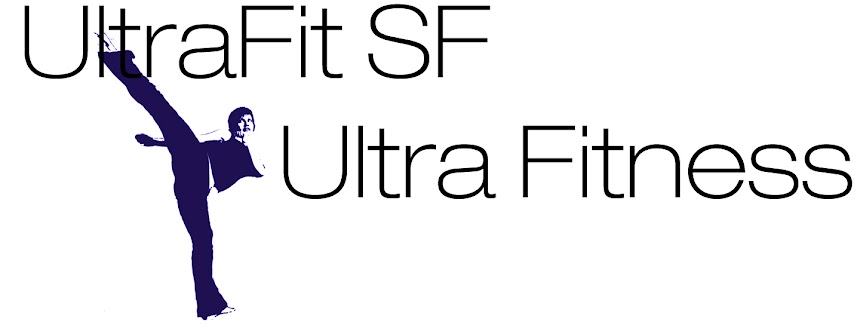









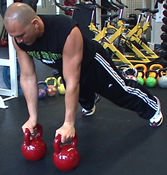
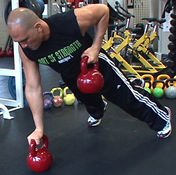


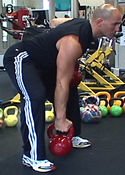
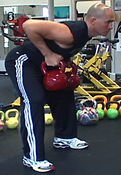


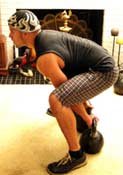



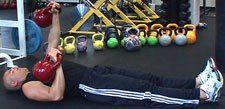










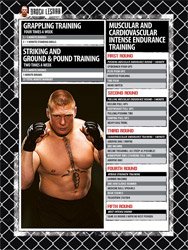 Brock Lesnar MMA Muscular & Cardio Intense Endurance Training
Brock Lesnar MMA Muscular & Cardio Intense Endurance Training